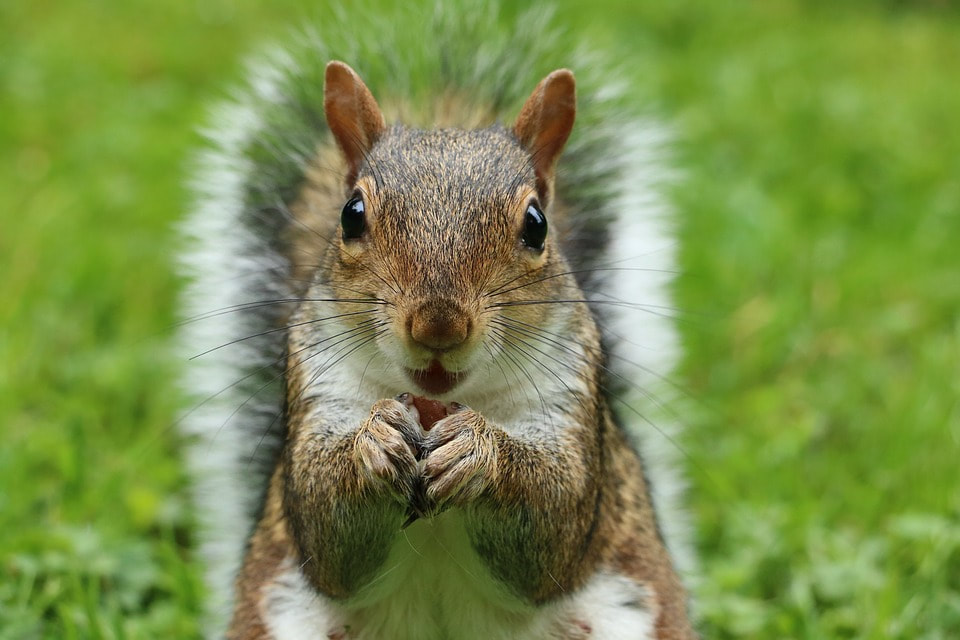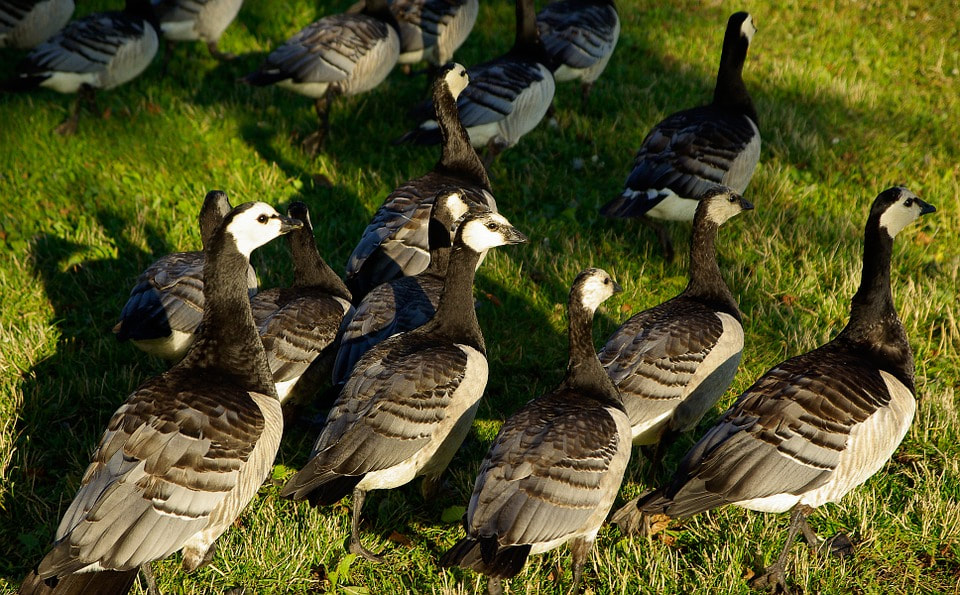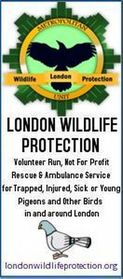|
The RSPB has killed more than 8000 animals* in the name of conservation over a five year period.
1715 Crows, 1760 Foxes, 508 Fallow Deer, 160 Muntjac Deer, 2008 Red Deer, 1734 Roe Deer, 906 Sika Deer....... RSPB "working with Natural England" After I broke the news of the Natural England bird killing licences, many of my readers contacted the RSPB for reassurance and advice. To my surprise, and theirs, it wasn't forthcoming. The Society issued a monotone acknowledgement without offering any opinion. They said at the time "we are aware of this matter and are trying to find out further detail. The RSPB is currently in the process of working with Natural England on the licensing process to make sure it is fit for purpose." And that was about it. No opinion, no condemnation or disapproval. I wondered why. It didn't take long to realise that the RSPB could hardly criticise their friends at Natural England when they themselves were killing our wildlife - including birds - for, in their words, "both conservation and other reasons". More than 8000 animals killed by RSPB in five years The RSPB are, at least, more forthcoming with their figures - unlike Natural England who seem very unwilling to release theirs - and the statistics are shocking. Between 2012 and 2017 the RSPB, and their contractors, killed approximately*:- 1715 Crows - (this figure includes those killed using Larsen traps, a system described by Animal Aid as 'particularly brutal'.) 1760 Foxes 508 Fallow Deer 160 Muntjac Deer 2008 Red Deer 1734 Roe Deer 906 Sika Deer 'Unrecorded' number Rabbits Some of the numbers appear to be a little vague, even using the RSPB's own figures. In their 2015/16 report they say that 28 foxes (out of several hundred foxes they killed at the time) were exterminated 'to protect neighbours' interests' (whatever that means) but these figures appear to be omitted entirely from the following year's statistics. They also killed an unspecified number of rabbits. Other wildlife on the list of animals the RSPB and their contractors killed include feral goats and 'large gulls' though I couldn't find anywhere details of which species the gulls were, which suggests, worryingly, that perhaps the RSPB themselves didn't know..... RSPB approach to conservation has made people uncomfortable... The RSPB earnestly maintain that they will try to implement a non-lethal solution to deal with animals that they classify as 'predators'. The RSPB's Conservation Director Martin Harper states that "The RSPB’s approach to any type of predator control means that we first seek evidence of a problem, check whether there is a non-lethal solution and if so implement that. In many cases this does the job needed." The fact that they couldn't catch a few feral goats for relocation, or find a 'non-lethal solution' to dealing with the thousands of crows and foxes that they exterminated, suggests to me that the RSPB need to take another look at their methods of 'predator control'. It all appears to be a bit Laurel and Hardy. The RSPB's practice of killing one species to protect another seems to have made many people uncomfortable; even among their members there has been concern, some have apparently been quitting the Society over what they see as a clumsy and unkind approach to 'conservation'. All of which might explain why they were less than critical of Natural England over the licences to kill wild birds. The good news is that no badgers appear on the RSPB kill list and very few squirrels. Oh but then again, Natural England are handling those particular culls very enthusiastically.... It's only human intervention that created imbalance in our countryside. If we don't start treating all of our remaining wildlife with compassion and respect then we will doubtless lose some of our most iconic species. Foxes, Crows, Rabbits - they are not pests, they are our natural heritage. Native or introduced, they belong to all of us and we don't necessarily want their survival decided by the RSPB, Natural England or anyone else. * statistics have been collated from RSPB published figures. The author has attempted to reference them as accurately as possible from the source material.
56 Comments
'Forgotten' Massacre Of 100,000 RED Squirrels Highlights Hypocrisy Over New Grey Squirrel Law20/1/2019 "Marketing the red as a 'national treasure' and the grey as a 'pest' merely transfers the label from one innocent species to another when all along the real problem, as usual, has been human interference in nature...."
A little while ago I added my name to a petition. It calls on the British government to amend a new law that will criminalise wildlife rescuers who rehabilitate grey squirrels. From March, under new regulations, it will be illegal to release rescued greys back into the wild - they will have to be kept in controlled captivity under strict licencing - or exterminated. The licencing criteria are not clear at this point. What is clear is that the government has labelled the grey squirrel as a pest that needs to be 'managed'. Whatever your opinion on grey squirrels, surely intervening to help any animal in distress amounts to a simple matter of compassion. To save a life is something that most of us find an instinctively kind and correct thing to do. So it was with dismay that I read a statement, issued yesterday by the government's environmental department DEFRA, in response to the 30,000+ people who have already signed the petition. Cold-hearted and frosty statement The words are so cold-hearted that they might have been written by a machine. Such a lack of compassion from the people tasked with protecting nature fills me with dismay. I quote from their frosty response here. "....the grey squirrel, will be managed through “eradication, population control or containment” measures." I've come to view that oft used term 'managed' as really quite sinister. They 'manage' badgers, rabbits, geese, ravens and any number of other species too. And we see their numbers declining. One might just as well replace 'manage' entirely with 'eradicate'. One justification given for removing grey squirrels is that they are invasive and are responsible for the decline in our native reds. That doesn't really hold water. The truth is that the demise of the red squirrel is almost entirely due to human persecution and decimation of its habitat. 102,900 RED squirrels massacred by hunters During the early part of the 20th century, gamekeepers and others viewed red squirrels as pests and a bounty was offered on their tails. In Scotland alone, between 1903 and 1946, 102,900 red squirrels were slaughtered. Now that memories of this mass killing of red squirrels have disappeared into the murky past, our newly found concern for the survival of the species has come too late - and along with a scapegoat, the grey squirrel. Marketing the red as a 'national treasure' and the grey as a 'pest' merely transfers the label from one innocent species to another when all along the real problem, as usual, has been human interference in nature. The new legislation will potentially give those who get their thrills from killing wild animals the green light to go and massacre squirrels again, this time greys instead of reds - with an official blessing from the government. How can that be right? Ancient woodlands destroyed - not by grey squirrels but by HS2 DEFRA's statement earnestly informs us that the government is deeply concerned over the future of our ancient woodlands. "Grey squirrels also cause damage to our broad-leaved and coniferous woodlands, with costs estimated at between £6 and £10 million per annum in Great Britain." No mention though of the 50 or more ancient woodlands that the government are willfully and recklessly destroying, completely and permanently, by building the new high speed railway HS2 right through them - and at a cost of 100 billion pounds. A bit of perspective - and honesty - is needed here I think; it actually seems that the 'problem' of squirrels destroying our woodlands is really quite insignificant compared to the damage caused to our woodlands by the government decision makers themselves. Here's another quote from the DEFRA statement. "Invasive species, including the grey squirrel, challenge the survival of our rarest species and damage some of our most sensitive ecosystems". We already know the red squirrel's demise is primarily down to people and not grey squirrels and that the government itself is more of a threat to our woodlands than grey squirrels could ever be; but what of the heartfelt concern over the 'survival of our rarest species'? Well I might take that more seriously had it not emanated from the same government departments behind the issuing of licences to shoot red and amber listed birds, including wrens, skylarks and robins. It all feels very contradictory doesn't it? Reluctance to engage with concerned public I've been campaigning to stop that government sanctioned killing of our wild birds, the petition is now at 91,000+ signatures, but regrettably I've found it difficult to engage with Natural England, the government department responsible for issuing the licences. Enquiries were initially met with silence and it took a freedom of information request to elicit a response. I broke the news on my blog and it was quickly picked up by the national press. Public outrage followed. And much of this was fuelled by the apparent indifference of DEFRA and Natural England who only issued a lacklustre statement after the news began to to go viral. Similar indignation is now growing at the new legislation over grey squirrels. DEFRA and Natural England really do need to engage more with the public of this country. Debate is necessary and healthy. A regrettable lack of human kindness. With regard to our grey squirrels, well whatever DEFRA's reason for wanting to 'eradicate' this now naturalised animal, a delightful creature that the people of this country have largely taken into their hearts, it is surely nothing to do with 'protecting our countryside', 'preserving our woodlands' or 'saving our red squirrels'. It is more to do with an agency that has been given the job of protecting our countryside but seems to have a skewed appreciation of nature and a regrettable lack of human kindness. Yet they feel they can decide, on behalf of us all - and without our consent - which species to 'manage and eradicate' and which to protect. At best their efforts appear erratic and insensitive. And at worst they show a total disregard for the concerns of the compassionate British public. You can sign the petition to save Grey Squirrels HERE The petition to stop the issuing of licences to kill rare birds is HERE
".....it is highly likely that large numbers of bats are being slaughtered by turbines offshore but nobody can collect the dead bodies at sea...."
It is a little known fact that bats can be found far out at sea. Though not much is known about their maritime adventures, we do know that some species migrate across large stretches of ocean, while others spend time at sea to find food, returning to land to roost. Yet there has been hardly any research at all into the impact of offshore wind development on these rare creatures. Study: "...bats were attracted to the turbines...." A Swedish study way back in 2007 found that "working wind turbines were not avoided by passing bats. On the contrary we soon discovered that some bats were attracted by the turbines." The study, which found no less than twelve species of bat in coastal areas or offshore, pointed out that if bat collisions occur with offshore turbines (as they do on land) "this is deplorable and it is a serious matter if this mortality lowers the density or wipes out local populations." "...a clear warning that we are not doing all we should..." Twelve years on and, shamefully, the wind industry is still ignoring the issue. We have seen a huge increase in offshore wind development yet there has been no thorough assessment of just how many bats are being killed by these giant banks of turbines. Last year, UK ecological consultancy company Baker Consultants, suggested that there is a shocking lack of knowledge over the effects of offshore wind development on bats. "In our experience..", they said, "it is very rare that we are asked to consider bats in our approach to pre-construction surveys or impact assessments". The company, which took part in a Conference on Wind Energy & Wildlife Impacts, pointed out the lack of research in the field. They said this was "a clear warning that we are not doing all we should to consider the potential impacts on bats from these installations." We can only guess at the numbers of dead bats.... With practically no data at all on bat deaths caused by offshore wind farms, we can only guess at the numbers. And from the horrifying estimates we have for bat deaths at onshore developments, we might expect that the situation at sea is equally disturbing. For the irresponsible wind energy companies, out of sight might be out of mind, because while it is highly likely that large numbers of bats are being slaughtered by turbines offshore, nobody can collect the dead bodies at sea. It is astonishing that the massive growth in offshore wind farms around the coasts of Britain and Europe has been permitted without any understanding of the effects this industrialisation of our seas may be having on bats, many of them rare and endangered species. And while frenzied development of offshore wind continues unabated around our coasts, we can probably add at least twelve species of bat to the growing list of endangered wildlife that is being slaughtered by the whirling blades of this nasty and under-regulated industry. Back in November, I reported on the horrific mass killing of Greenland Barnacle Geese on the Scottish island of Islay, under a 10 year government backed scheme, which began in 2014.
Wholesale Slaughter: 17,000+ Birds But the wholesale slaughter, which is being overseen by Scottish Natural Heritage, could be much worse than I first thought. And it could even threaten the long term survival of the species. I've been made aware of plans to massacre at least 17,000 more birds on the island. The figures I've seen suggest that SNH want to keep the population of Barnacle Geese at between 28,000 and 31,000. In the period 2016/2017, the number of Barnacle Geese on the island was estimated at around 47,000. Given that SNH want to keep numbers at around 30,000, that would suggest that they plan to exterminate 17,000 birds. The cull has been the subject of much controversy and criticism, though SNH justify the slaughter by claiming that the birds - which are RSPB Amber listed - cause an estimated £1.5 million worth of damage to agriculture on Islay each year, while they overwinter on the island. SNH: Cull Is A "Small Proportion" Of The Population Scottish Natural Heritage have stated that they are allowing a 'small proportion' of the population to be killed each year but it seems that they might have given themselves carte blanche to entirely decimate the population under their 'strategy'.... it's haphazard at best. With Islay supporting 60% of all the Greenland Barnacle Geese on the planet, the SNH 'management' scheme could put the species' survival, at least in the UK, at great risk. The birds had been in steep decline before the population bounced back during the second half of the 20th century. In 1959 there were less than 9,000 individuals recorded in an annual international census . After that low, the Barnacle Goose population did recover but estimates for 2018 suggest that the population is now at its lowest for ten years. Clearly the population is under stress. Clearly the cull should be halted. SNH: Cull "Meets All Of Our International Conservation Obligations" Migratory birds such as the Barnacle Goose are protected internationally but according to SNH, the cull is permitted. They state: "the Strategy will maintain Greenland Barnacle Goose numbers at a level which will meet all of our international conservation obligations." If that is the case then those 'conservation obligations' clearly need to be questioned..... |
If you appreciate what I write about, please consider showing your support by buying me a virtual coffee!
Click the button below! Thanks :) Archives
July 2023
|






 RSS Feed
RSS Feed